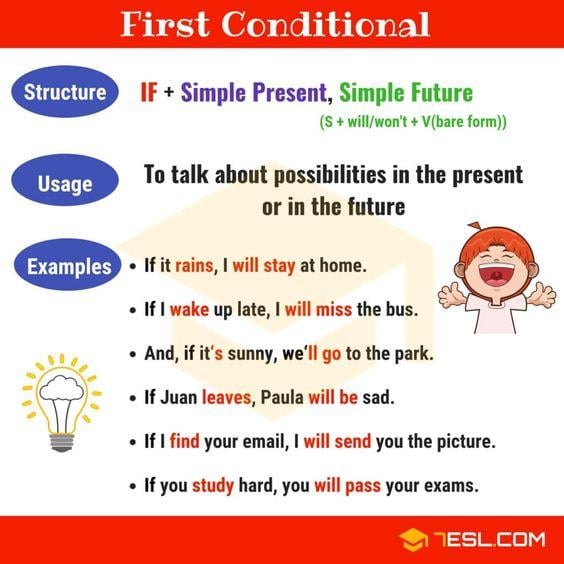Conditionals are an important part of English grammar. Take a look at the following explanation to learn how to use the first conditional correctly.

What Is the First Conditional?
The first conditional indicates something that may happen in the present or future. It has a two clause structure. This includes an if clause and the main clause.
A comma usually separates the two clauses if the if clause precedes the main clause. The example below illustrates the comma necessity.
- If I win the contest, I will be rich.
In contrast, when the main clause appears first there is no need for a comma. The example below shows the lack of a comma.
- I will be rich if I win the contest.
When the main clause comes first if acts as a conjunction and joins the two clauses together.
First Conditional Structure
The first conditional uses a different verb form in each clause. To construct the if clause you would write if + subject + simple present verb tense. To construct the main clause, you would write subject + will + verb.
First Conditional Form: If + Simple Present, Subject + will/won’t + Verb.
Examples of first conditional sentences:
- If it rains, I will stay at home.
- If I wake up late, I will miss the bus.
- And, if it‘s sunny, we‘ll go to the park.
- If Juan leaves, Paula will be sad.
Register now & get certified to teach english abroad!


